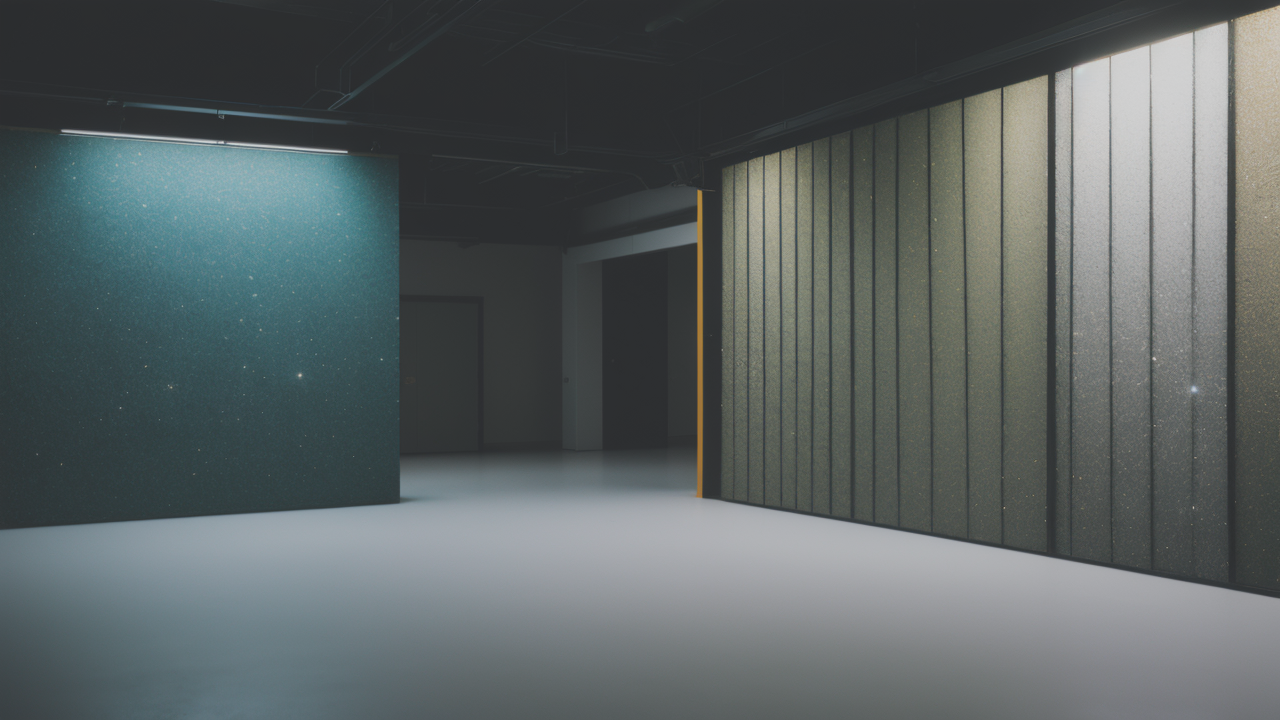
The Power of Restraint: Crafting Minimalist Color Schemes for Impactful Artwork
The Rise of Colorful Minimalism in Modern American Art
The Historical Context of Minimalism
Minimalism emerged in the 1960s as a reaction to Abstract Expressionism. It focused on simplicity and basic geometric forms. Artists like Donald Judd and Frank Stella led this movement. They used industrial materials and reduced art to its core elements. The goal was to create art without hidden meanings or emotions. Minimalism spread beyond visual arts to architecture and design. It challenged traditional ideas about what art should be. This style emphasized the physical qualities of materials. Minimalism paved the way for new art forms and ideas. It changed how people think about space and form in art.

The Evolution of Minimalism into a Colorful Movement
Over time, minimalism began to embrace color. Artists started adding vibrant hues to simple forms. This shift marked the birth of colorful minimalism. Ellsworth Kelly was a key figure in this transition. He used bold, flat colors in simple shapes. Other artists like Kenneth Noland also explored color in minimalist art. This new approach kept the clean lines of minimalism. But it added visual interest through color. It made minimalism more accessible to a wider audience. The result was a fresh and exciting art form. It combined the simplicity of minimalism with the emotion of color.
Key Colorful Minimalism Artists and Their Legacy
Several artists have shaped colorful minimalism in modern American art. Ellsworth Kelly is known for his bold, colorful shapes. Josef Albers explored color theory in his "Homage to the Square" series. Carmen Herrera created striking geometric paintings with vivid colors. These artists influenced modern aesthetics greatly. Their work is found in major museums around the world. They inspired a new generation of artists to explore color in minimalist art. Contemporary artists like Sarah Morris continue this tradition. The legacy of these pioneers lives on in current art trends. Their influence extends beyond art to fields like design and architecture.
Market Dynamics of Colorful Minimalism Artwork
Factors Influencing the Popularity of Colorful Minimalism
Colorful minimalism has gained popularity for several reasons. First, it fits well with modern interior design trends. The simple forms and bold colors complement contemporary spaces. Second, it appeals to both art experts and casual viewers. The style is easy to understand and appreciate. Third, social media has boosted its visibility. Colorful minimalist art looks great in photos. This makes it popular on platforms like Instagram. Lastly, it offers a fresh take on minimalism. This attracts collectors looking for something new and exciting.

Market Trends and Consumer Preferences for Minimalist Art
The market for colorful minimalist art is growing steadily. Collectors are showing increased interest in this style. Large, statement pieces are in high demand. They can transform a space with their bold presence. Limited edition prints are also popular. They offer a more affordable way to own minimalist art. Young collectors are especially drawn to this style. They see it as modern and investment-worthy. Online art platforms have made it easier to buy minimalist art. This has expanded the market globally. Galleries are featuring more colorful minimalist works in their exhibitions.
The Economics of Art: Pricing Strategies for Colorful Minimalism
Pricing in the colorful minimalism market varies widely. Established artists can command high prices for their works. Their pieces often sell for millions at auctions. Emerging artists offer more affordable options for new collectors. Factors affecting price include the artist's reputation and the work's size. Limited editions and unique pieces typically cost more than reproductions. Galleries play a key role in setting prices. They consider market trends and artist demand. Online platforms have made pricing more transparent. Collectors can easily compare prices across different sources. The market for colorful minimalism has shown steady growth in recent years.
Future Outlook and the Role of Technology in Shaping Minimalist Art
Innovations in Art Presentation and Storage
Technology is changing how we display and store minimalist art. Digital frames allow for rotating art displays in homes and offices. This lets collectors show more pieces in limited space. Augmented reality apps help buyers visualize art in their homes. This makes purchasing decisions easier and more confident. Advanced lighting systems enhance the viewing experience of minimalist art. They can adjust to show colors accurately in different settings. For storage, smart climate control systems protect artworks. Blockchain technology is being used to verify art authenticity. These innovations are making art more accessible and secure for collectors.

The Role of Digital Media in Colorful Minimalism Creations
Digital tools are reshaping how artists create colorful minimalist works. Many use software to design and edit their pieces. This allows for precise color selection and perfect geometric shapes. Some artists create entirely digital works of art. These can be displayed on screens or printed on various materials. NFTs (Non-Fungible Tokens) have opened new markets for digital minimalist art. They allow artists to sell unique digital pieces with verified ownership. Social media platforms serve as virtual galleries for artists. They can share their work with a global audience instantly. These digital tools are expanding the possibilities of minimalist art creation and distribution.
Predicting the Next Wave in Colorful Minimalism Art Trends
The future of colorful minimalism looks bright and innovative. We may see more interactive minimalist art in the coming years. This could include pieces that change color or shape based on viewer interaction. Virtual reality could offer new ways to experience minimalist art immersively. Artists might explore sustainable and eco-friendly materials in their work. This aligns with growing environmental concerns in the art world. There could be a fusion of minimalism with other art forms and technologies. For example, minimalist sculptures with changing colors or digital projections. As technology advances, new forms of expression will emerge within the minimalist framework. The core principles of simplicity and bold color will likely remain central to the movement.


